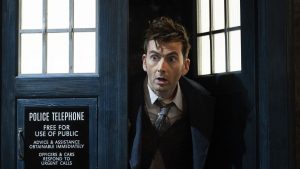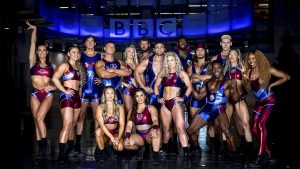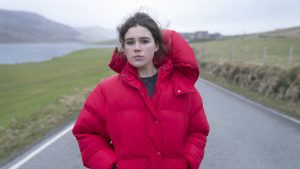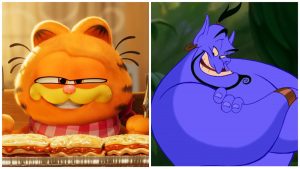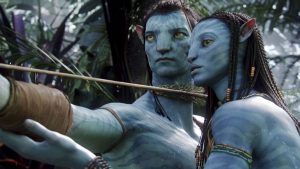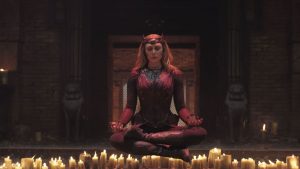
George Hurrell’s Hollywood
Glamour Portraits 1925-1992
Revised Edition
by Mark A. Vieira
Foreword by Sharon Stone
Running Press
September 2023
Paperback ISBN: 9780762484607
406 pages
“The dreamlike world of silent pictures had created a stary system based on personalities who were bigger than life. The naturalism of talking pictures diminished them. If the star system was to survive, the studios would have to enlarge them again. Along came Hurrell, who adapted his technique to this purpose…. In the process, Hurrell perfected a photographic idiom: the Hollywood glamour portrait.” — Mark A. Vieira
A George Hurrell portrait is something truly special. Some of the best photographs of movie stars from the golden age of Hollywood—Norma Shearer, Clark Gable, Joan Crawford, Ramon Novarro, Jean Harlow, Robert Montgomery, Carole Lombard, Mae West—were shot by George Hurrell. He captured the glamour of the industry in its heyday and showcased his subjects at their very best. These dreamy, sexy portraits helped elevate the subject in the public’s esteem. In many cases, a Hurrell portrait, often used to publicize a new film, transformed careers. For example, an important photo shoot with Norma Shearer helped the actress convince her husband, producer Irving Thalberg, to cast her in The Divorcee (1930) ushering her into a new phase in her career. Hurrell’s photoshoot with Jane Russell for Howard Hughes’ pet project The Outlaw (1943) catapulted Russell into fame well before the film was even released to the public. George Hurrell worked with MGM and Warner Bros. and as an independent contractor worked directly with stars or did freelance for other studios like Columbia and RKO.
Once the studio system began to wane and glamour portraits fell out of fashion, Hurrell struggled to find steady work. Times were changing and so was the technology used in photography. Hurrell’s work suddenly became old-fashioned. However, towards the end of Hurrell’s life, a new appreciation of his early work led collectors and other photographers to gather and share his work. Hurrell enjoyed a legacy tour which saw his portraits in books and in traveling museum exhibitions. Throughout the ’80s, Hurrell was photographing new talent—musicians, comedians, actors—in an era that was far cry from the one he started in during the 1920s. Hurrell worked up until he died in 1992 with his final celebrity subject being actress Sharon Stone.
George Hurrell’s Hollywood: Glamour Portraits 1925-1992 by Mark A. Vieira is a fitting tribute to an artistic genius. This book was originally published in 1997 as Hurrell’s Hollywood Portraits and then republished as George Hurrell’s Hollywood in 2013. Running Press has released a revised and expanded paperback edition which includes 50% more photographs than the 2013 hardcover. Also Mark A. Vieira, a film historian and photographer who first met George Hurrell in 1975, restored every photograph found within the new edition. If you haven’t gotten the book yet, please make sure you get the paperback. And if you have the hardcover, now is the time to upgrade!
This book is absolutely stunning. The photographs are presented at their best and many take up an entire page. Joan Crawford fans will be particularly interested because she was Hurrell’s most photographed subject—they did 33 photoshoots together—and lots of those photos are found within. It’s a sturdy paperback and while it is on the heavier size I found that it holds quite well. Because the spine and the signatures are one big block, this is one of the few photography books that I think could stand up on a shelf without the heavy pages pulling from the spine.
In reading the book, I was particularly interested in learning how Hurrell built his network of contacts, how he worked within the studio system and the techniques he developed to showcase his subjects at their best. While there is a bit of biographical information on Hurrell in order to place the timeline in context, the focus of the book is really his career.
“You can’t work with a person and be exactly cold-blooded because there’s got to be a rapport, there’s got to be that quality, that something that rings between the two of you. If it doesn’t, well, you might as well quit and go home.” — George Hurrell
Some interesting facts from the book:
Hurrell advanced his career through connections. A photo shoot with a wealthy socialite led him to meet Ramon Novarro who introduced him to Norma Shearer which led to a contract as a studio photographer at MGM.Hurrell mostly shot in black-and-white but also photographed in Kodachrome and Warner Color.He shined a spotlight on the part of the hair. “The placement of the boom light so that it shone down from behind, or down the part in the subject’s hair, on onto the cheekbones”This had the effect of giving the subject’s face a lot of dimension. In retouching, he would add a tiny dot in order to make the eyes pop more and liven the face in the final portrait.Used the color white to great effect. Actresses wore white dresses. Subjects would be photographed against a white wall.He would play music and use sexy talk to get his female subjects in the mood. Olivia de Havilland was having none of this and did not enjoy working with Hurrell.Vieira refers to Norma Shearer as Hurrell’s patron and Joan Crawford as his muse.Worked with Greta Garbo. In one photo shoot, he pretended to trip over something in order to get a reaction out of her. When it did, Garbo’s more expressive looks translated well on camera. She later became his landlord when he rented out new studio space for his photography.
George Hurrell’s Hollywood was recently selected as one of The Hollywood Reporter’s Top 100 Film Books of All Time.
I discuss the book at length on episode #2 of The Classic Movie Roundup. Watch here:
Thank you to Running Press for sending me a copy of George Hurrell’s Hollywood for review!
